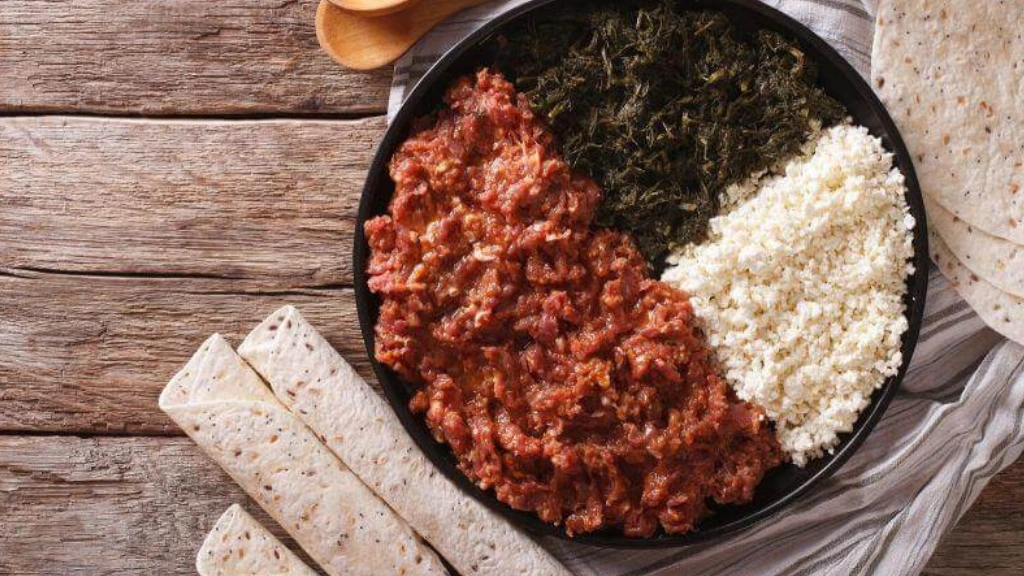Gyro, Greece’s beloved street food, has captivated the taste buds of food enthusiasts worldwide with its juicy meat, crispy pita, and refreshing tzatziki sauce.
This classic Greek delight has become synonymous with Mediterranean cuisine, showcasing the country’s rich culinary heritage and cultural identity.
You May Also Like: Cooking with Soul: The Heart of Food Creation
History and Origins
Gyro’s origins date back to ancient Greece, where cooks would stack layers of meat on a vertical spit, creating a precursor to the modern gyro.
The name “Gyro” derives from the Greek word “γύρος” (gyros), meaning “round” or “circle.”
Authentic Ingredients and Preparation
A traditional Gyro recipe requires:
- Meat: Pork, chicken, or beef, stacked on a vertical spit.
- Pita Bread: Warm, crispy Greek pita.
- Tzatziki Sauce: Yogurt-based sauce with cucumber, garlic, and dill.
- Tomatoes: Fresh, sliced tomatoes.
- Onions: Thinly sliced red onions.
- Cucumber: Thinly sliced cucumber.
To prepare authentic Gyro:
- Stack meat on a vertical spit.
- Grill meat as it rotates.
- Warm pita bread.
- Assemble gyro with meat, tzatziki sauce, tomatoes, onions, and cucumber.
Regional Variations
While traditional Gyro hails from Athens, regional variations exist:
- Thessaloniki-Style: Beef or pork gyro with spicy peppers.
- Cretan-Style: Lamb or goat gyro with herbal flavors.
- Vegetarian Gyro: Plant-based version, substituting meat with grilled portobello mushrooms.
Cultural Significance
Gyro embodies Greek culture:
- Street Food: Gyro vendors are ubiquitous in Greek cities.
- Community: Gyro is often shared among friends and family.
- Tradition: Recipes passed down through generations.
Health Benefits
Gyro offers surprising health benefits:
- Protein-Rich: Meat provides lean protein.
- Fiber-Rich: Pita bread and vegetables contain dietary fiber.
- Antioxidant-Rich: Tomatoes and cucumbers contain antioxidants.
Celebrity Chefs’ Takes
Renowned chefs share their Gyro interpretations:
- Jamie Oliver: Adds feta cheese and grilled halloumi.
- Bobby Flay: Incorporates spicy Greek peppers.
- Cat Cora: Uses traditional Greek ingredients with modern twists.
Modern Twists and Innovations
Contemporary chefs experiment with Gyro:
- Korean Gyro: Fusion of Korean and Greek flavors.
- Vegan Gyro: Plant-based alternatives.
- Gyro Wrap with Egg: Added protein and creaminess.
Conclusion
Gyro’s flavorful spin of tradition has solidified its position as Greece’s national dish.
By understanding its origins, authentic preparation, and cultural significance, we can appreciate the simplicity and beauty of this iconic street food.
References
- “The Oxford Companion to American Food and Drink” by Andrew F. Smith.
- “Gyro: A Recipe’s Evolution” by The Greek Reporter.
- “Greek Cooking” by Diane Kochilas.
Fact Box
- Originated in ancient Greece.
- Name “Gyro” derives from Greek word “γύρος” (gyros).
- Traditional ingredients: meat, pita bread, tzatziki sauce, tomatoes, onions, and cucumber.
- Regional variations exist throughout Greece.
- Rich in protein, fiber, and antioxidants.










